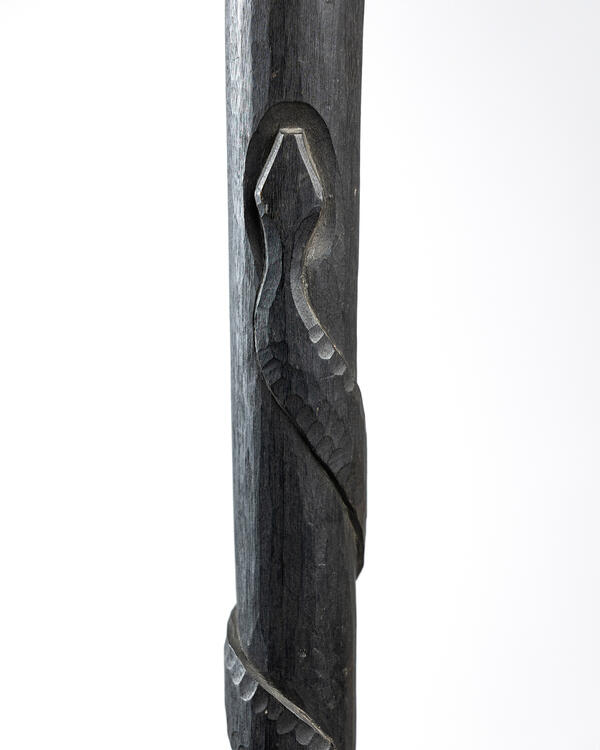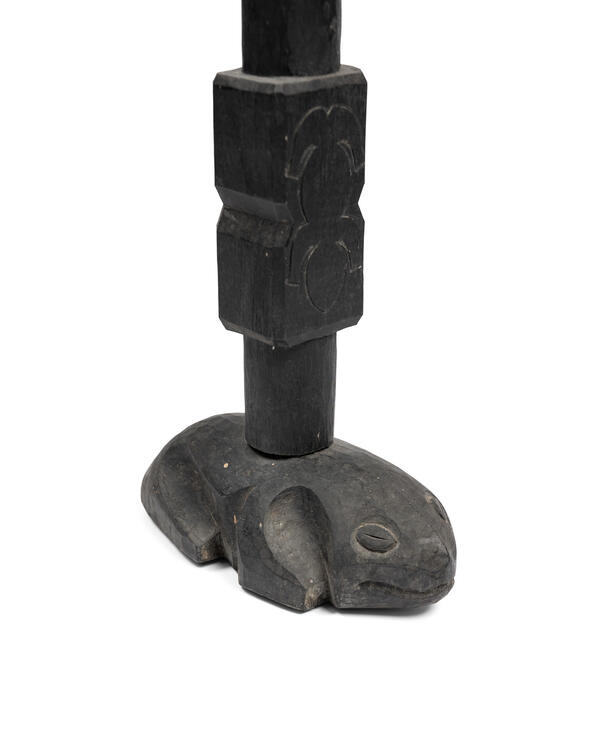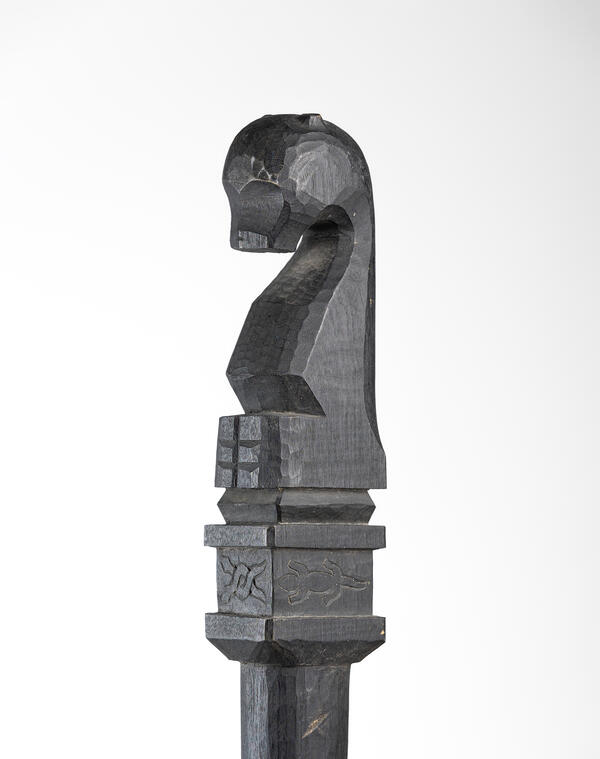The Udege people believed in countless spirits living in the world around them. They were called sevens, and their receptacles, sculptural images, were called sevokhas. Since the Udege people believed that no one passes away entirely without a trace, they revered the spirits of ancestors. They especially honored the ancestors of their people — the tiger and the bear. The shaman played an extremely important role in communicating with the spirits. He not only helped successful fishing, cured diseases, protected from the influence of evil spirits, but also escorted the souls of the dead to the underworld, guarded the souls of infants, thus protecting the clan.
The exhibition of the Museum of Far East History named after Vladimir Arseniev presents a staff — an indispensable element in the complex of shamanic paraphernalia. Together with a tambourine, a bell, a cloak and a headdress, the staff helped the shaman to reincarnate. With its help the connection with the universe and transition to other worlds was realized. There were several kinds of staffs. Some were used instead of a tambourine, imbued with cosmic symbolism. Others served as a weapon in the fight against evil spirits or a means of transporting the shaman through the spheres of different worlds. The staff was made of wood or iron, strictly under the supervision of an experienced shaman. All shamanic staffs are similar in one respect: people tried to reflect their understanding of the Universe. In fact, the shaman’s staff was a copy of the world tree; it enabled the shaman to connect the sacred and ordinary worlds.
The Udege people proved
themselves as excellent wood carvers. The range of crafts was quite large. The
shaman’s staff from the museum’s collection is made of wood and painted black.
Black paint was obtained from a mixture of charcoal, soot, black growth on elm
or from bird cherry berries. The base of the staff is carved with a pattern in
the form of a frog. A carved serpent twines the shaft of the staff. According to the Udege beliefs, the snake
symbolically represents the creator of the river and the sea, the guardian of
water and heat. The good serpent was also the assistant of the shaman. The top
of the staff is made in the form of a bear’s head — the totem animal.





